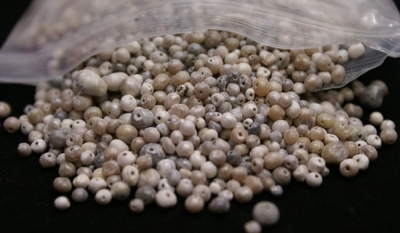The 10th century cargo, described as the largest haul of treasure recovered from any South East Asian ship wreck, included 400 Ceylon sapphires, thousands of garnets and zircon as well as vast quantities of lapis lazuli and quartz.
In addition there were close to 11,000 pearls that had originated from the old pearl fisheries in Mannar (Sri Lanka) as well as the Persian Gulf.
The Cirebon wreck was named after the coastal town Cirebon in Java where it was discovered by fishermen in 2003, resting on a flat seabed about 60 meters below sea level.
Belgium-based Cosmix Archaeological Underwater Research and Recovery took more than two years and 22,000 dives to bring most of the treasure up from the sea bed.
The gemstones recovered were intriguing, recalls Luc Heyman, Director of Cosmix. “We were intrigued by the blue stones as well as the thousands of red ones: we suspected the blue ones to be sapphires and the red stones to be rubies.”
Ken Scarratt, the director for South East Asia of the Gemological Institute of America and GIA Research Center in Bangkok who was invited to examine the gemstones at Christie’s warehouse in Singapore, said that there were some 400 sapphires in a range of colors from blue, yellow and pinks, mostly in paler shades, all confirmed to be from the gem gravels of Ceylon (Sri Lanka).
The 4,000 red stones were identified as garnets from either Sri Lanka or South India while the vast quantity of lapis lazuli was from Afghanistan.
He said an important fact of the Cirebon sapphire find is that it confirms that Sri Lanka is the oldest source of sapphires in the world.
The Cirebon find indicates that sapphires together with pearls and other gemstones were a regular part of goods traded on the busy maritime Silk Route.
The large cache of pearls could have been from the Gulf of Mannar in Sri Lanka or the Persian Gulf. The pearls had been drilled indicating they had gone to India at some point for drilling.
With these recent findings, it poignant to note that the 16th Congress of the International Colored Gem Stones Congress (ICA) is expected to be held in Sri Lanka from May 16th to 19th at the Cinnamon Grand Hotel.
This is the second time that Sri Lanka will be hosting the prestigious ICA event which prides itself for uniting various segments of the colored gem trade.
The theme for the event is “Sapphire & MORE”. A 'Facets Congress Gem Show' will also be held at same venue.
The event has been poised as an occasion for networking and developing new business opportunities whilst showcasing the lucrative local gem and jewelry trade.
The ICA is in coordination with the main organizers, the National Gem and Jewelry Authority of Sri Lanka (NGJA) and the Sri Lanka Gem and Jewelry Association (SLGJA) along with the Export Development Board (EDB) in planning and organizing this prestigious event.
For more information please email This email address is being protected from spambots. You need JavaScript enabled to view it. Or contact Ms. Ruani Wickramasekera, Project Coordinator at Sri Lanka Gem & Jewellery Association on 071 0535 424.
The website is www.congress.gemstone.org



























